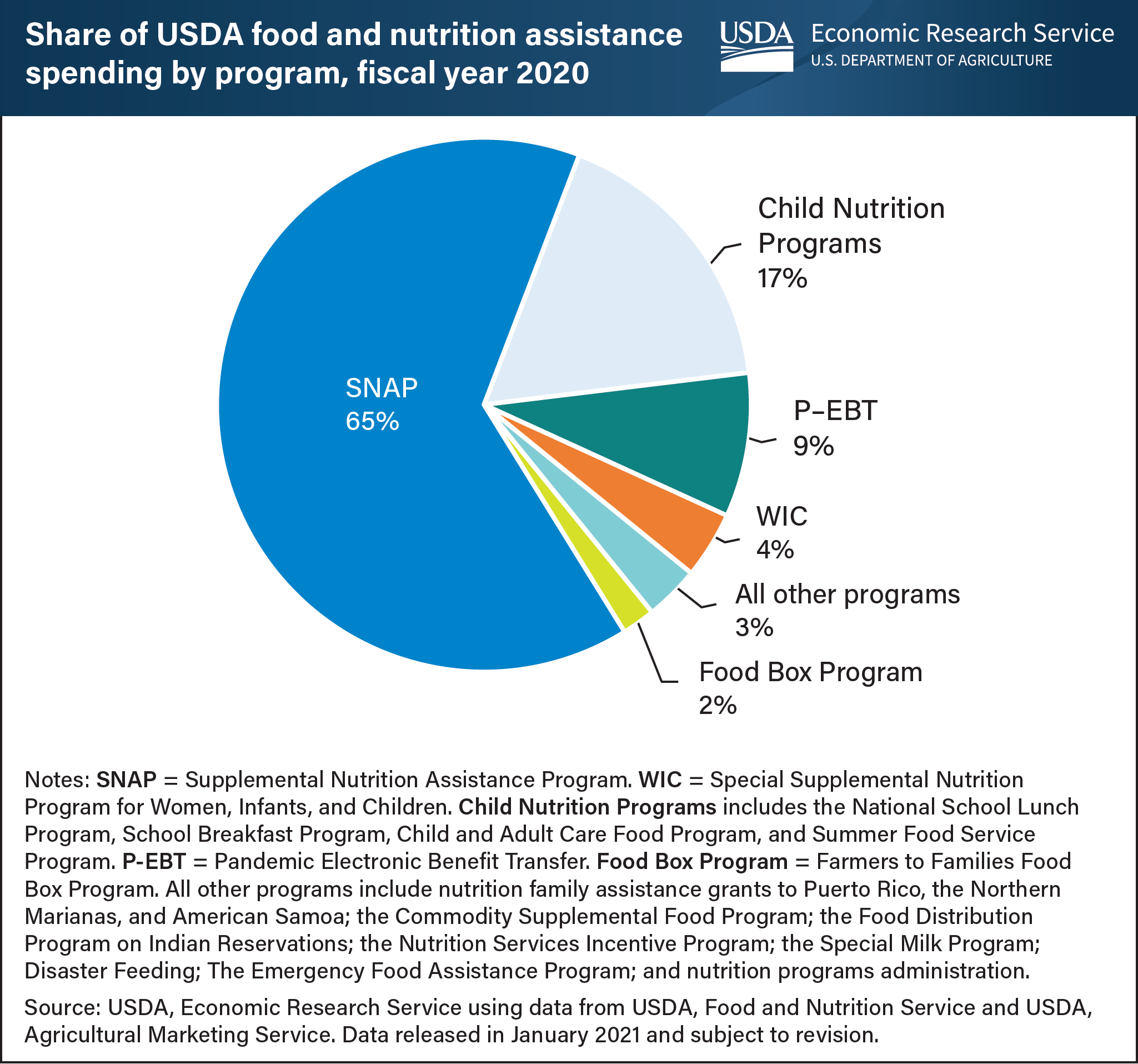Pandemic response contributed to 32 percent increase in Federal food assistance spending in FY 2020
- by Saied Toossi, Jordan W. Jones and Leslie Hodges
- 8/25/2021

Total spending on USDA’s food and nutrition assistance programs increased 32 percent from $92.5 billion in fiscal year (FY) 2019 to $122.1 billion in FY 2020. The way spending was distributed reflects changes to the food assistance landscape in FY 2020 resulting from the Coronavirus (COVID-19) pandemic and subsequent economic downturn and Federal response. Spending on the Supplemental Nutrition Assistance Program (SNAP) increased because of greater participation and additional benefit issuance, accounting for 65 percent of total spending. Combined spending on the four largest child nutrition programs fell in FY 2020, as did spending on the Special Supplemental Nutrition Program for Women, Infants, and Children (WIC). Together these programs accounted for 21 percent of total spending. As part of the Federal response to the pandemic, two new assistance programs were created: Pandemic Electronic Benefit Transfer (P-EBT) and the Farmers to Families Food Box Program. In FY 2020, P-EBT benefits totaled $10.7 billion, and Food Box Program spending totaled $2.5 billion. Together, these two programs accounted for 11 percent of overall food and nutrition assistance spending. This chart is based on data available as of January 2021 that is subject to revision and on a chart in the USDA, Economic Research Service’s Food and Nutrition Assistance Landscape: Fiscal Year 2020 Annual Report, released August 24, 2021.


